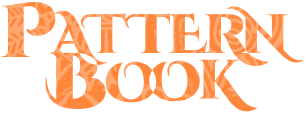Accordion content
Accordion Content - full width
Dance Hall at Louse Point is the debut collaborative studio album by English alternative rock musicians PJ Harvey and John Parish, released on 23 September 1996 on Island Records.
Is This Desire? is the fourth studio album by English musician PJ Harvey, released on 28 September 1998 on Island Records.
Recorded on and off in Dorset and London between April 1997 and April 1998, it was co-produced by Flood, Head and Harvey herself, and featured instrumental contributions from Rob Ellis, John Parish, Mick Harvey, Eric Drew Feldman, Joe Gore and Jeremy Hogg. It marked a move away from Harvey’s earlier guitar-driven rock style into subtler, quieter, atmospheric soundscapes and mood pieces based around keyboards, bass and electronics.
Stories from the City, Stories from the Sea is the fifth studio album by English alternative rock musician PJ Harvey, released on 23 October 2000 by Island Records. Recorded during March to April 2000, it contains themes of love that are tied into Harvey's affection for New York City.
The album became the second major commercial success of her recording career, following her successful breakthrough To Bring You My Love (1995). Upon its release, the album received acclaim from most music critics and earned Harvey several accolades, including the 2001 Mercury Prize. It spent 17 weeks on the UK Albums Chart, and was certified Platinum in the UK and Australia. It is generally regarded as one of her best works. In the updated version of Rolling Stone's 500 Greatest Albums of All Time, it was ranked at number 431.
Uh Huh Her is the sixth studio album by English alternative rock musician PJ Harvey. The album was written, recorded and produced over a two-year period by the singer-songwriter herself. She also played every instrument in the album – a first from Harvey since 4-Track Demos in 1993 – with the exception of the final drum tracks, added by long-time collaborator Rob Ellis. It was released on 31 May 2004 in the United Kingdom and on 8 June 2004 in the United States.
To support the release, Harvey toured for seven months. She performed in various European summer festivals such as Glastonbury and opened for Morrissey in a few dates. During the same tour she also performed the album's unreleased title-track. Uh Huh Her debuted and peaked at number 12 in the UK Albums Chart and has been certified Silver by the BPI.[5] It became Harvey's highest charting album to date in the U.S., peaking at number 29 in the Billboard 200, and had sold more than 135,000 copies there as of 2005, according to AskBillboard. Although it charted higher than Stories from the City, Stories from the Sea in many territories, Uh Huh Her failed to achieve its predecessor chart longevity and crossover interest.
The album received largely positive reviews upon its release, although there was some criticism towards its production. It currently holds a 79 out of 100 metascore at Metacritic based upon 28 reviews, indicating "Generally Favorable Reviews". Uh Huh Her also earned PJ Harvey nominations to awards such as the Grammy Awards and the Brit Awards.
Widget settings
| Widget title | Accordion Content - full width |
|---|---|
| Accordion section 1 title |
Dance Hall at Louise Point |
| Accordion section 2 title | Is This Desire? |
| Accordion section 3 title | Stories from the City, Stories from the Sea |
| Accordion section 4 title | Uh Huh Her |
| Show expand all link | off |
| Top margin | off |
| Bottom margin | on |
| Widget width | Full |




